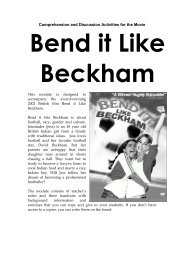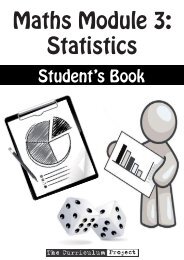Teacher's Guide - The Curriculum Project
Teacher's Guide - The Curriculum Project
Teacher's Guide - The Curriculum Project
- No tags were found...
You also want an ePaper? Increase the reach of your titles
YUMPU automatically turns print PDFs into web optimized ePapers that Google loves.
Money & Barter (cont’d)Note: ’BCE’ stands for ‘Before the Common Era’. It is the same as BC, the Christian dating systemwhich stands for ‘Before Christ’. ‘CE’ stands for ‘Common Era’ and is the same as AD, the Christiandating system which stands for ‘Anno Domini’ (Year of our Lord).Ask students to read the text about the ‘History of Money’. Give them about10-15 minutes. Elicit any words that students don’t know. Ask if they can guessthe meaning. If not, give them a dictionary, or tell them the meaning.On Your Own1. Write following statements about the History of Money on the board,. Putstudents into pairs. Ask them to decide whether the statements are true orfalse. If they are false, they must provide a correct statement. Give them about15 minutes to complete the activity. <strong>The</strong>n elicit one answer from different pairsand check agreement with the rest of the class.1. <strong>The</strong> world’s first metal money appeared in Lydia in 500 BCE.False. <strong>The</strong> world’s first metal money appeared in China in 1000 BCE.2. <strong>The</strong> use of livestock as money started around 9000 BCE.True.3. <strong>The</strong> first metal money was made out of bronze and copper.True4. Shells have never been widely used as money.False. <strong>The</strong> shell is the most widely and longest used currency in history.5. <strong>The</strong> first use of paper money in China was in 1455 CE.False. <strong>The</strong> first use of paper money in China was in 860 BCE.Pairwork2. Timeline. In pairs, ask the students in groups to create a timeline showingthe history of money. Here is an example. You will need to show them how tostart their timeline. If possible, provide the students with large pieces of paperto draw their timelines on. If you don’t have this, they can use their notebooks.Ask them to be creative - maybe they can use pictures also. <strong>The</strong>ir timelinesdon’t have to look exactly like the one below, as long as they have the keyinformation. Give them about 10-15 minutes to complete them.BarterLivestockShellsFirst MetalMoneyModernCoinsElectronicMoneyBeginning9000 BCE1200 BCE 1000 BCE500 BCETodayWhen they have finished, ask each pair to stick their timeline on the wall ofthe classroom. Ask students to look at all the timelines, and then have a voteon which they think is the best (they can’t vote for themselves).<strong>The</strong> <strong>Curriculum</strong> <strong>Project</strong> ECONOMICS: an introduction - Teacher’s <strong>Guide</strong>8


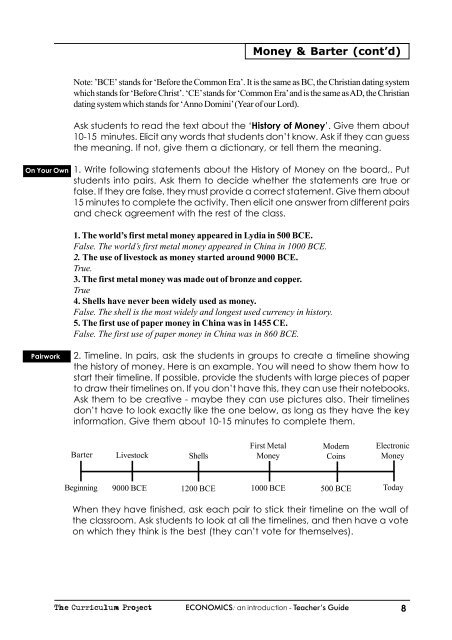
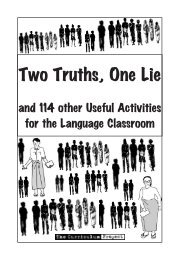
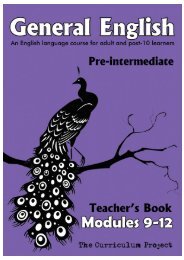
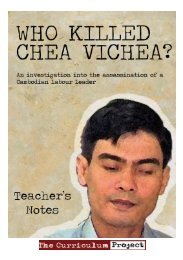

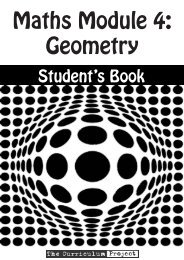

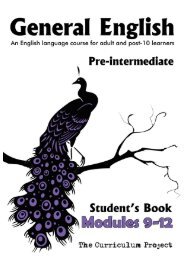

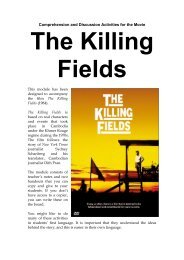
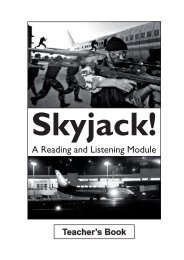
![[Eng] Nov 2012 DRAFT - The Curriculum Project](https://img.yumpu.com/45590859/1/184x260/eng-nov-2012-draft-the-curriculum-project.jpg?quality=85)
